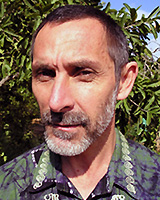Introduction
Mid-level medical workers are a part of the healthcare team in developed1 and developing countries1-3. The World Health Organization has recommended their introduction as one way to address the issue of access to health care in rural and remote areas2. In South Africa, a decision to develop a new cadre of health worker as a mid-level medical worker was taken by the national government in December 2002, as a strategy to address the shortage of health professionals at district level, particularly in rural areas, based on a 2001 report prepared by a Ministerial Task Team on Human Resources ('the Pick Report')3.
This decision represented a change in direction, as prior to that the nurse practitioner had been seen as the backbone of primary care, and the main resource4. Nurse clinicians, or primary healthcare nurses (PHCNs) as they are commonly known, had been trained in the country since the mid-1970s, following the Soweto uprising, which led to the apartheid government withdrawing medical services from black townships5. However, in 2002 the then national Minister of Health Dr Manto Tshabalala-Msimang, who like many ANC leaders had become familiar with medical assistants during the years of exile in other African countries, argued that it was wrong to be training nurses as mid-level workers, given the shortage of nurses and the length of time taken to train them. (A similar argument was being made in the UK at around the same time6.) Thus Dr Tshabalala-Msimang took the lead in advocating for the creation of this new cadre.
The purpose of this article is to describe how South Africa has developed a new mid-level medical professional category over the last decade, both because this experience adds to the international evidence on the strengths and challenges of developing mid-level workers7, and also because it offers an example of a targeted strategy to address rural human resource needs.
The process of setting up this new profession followed a classical project management approach, including initiation, planning and design, execution and implementation, and monitoring and evaluation. These elements are described in the sections that follow.
National process: establishing the principles
Following fact-finding missions to the USA and Tanzania, a national task team under the auspices of the Family Medicine Education Consortium was commissioned to set up the training for this new group. It was agreed that the logical first step in establishing a curriculum was to agree on a scope of practice, at least in general terms. A series of consultations with a range of different groups around the country led to a decision that these new medical assistants should be trained for district hospitals, with a specific focus on rural districts, to support and work with doctors in carrying out clinical tasks. The rationale for this included the fact that district hospitals, which are staffed by generalist doctors and cover the whole country, were (and are) constantly short of medical personnel, yet play a pivotal role in the provision of health care in districts, supporting the primary care clinics and health centres, and interfacing with higher-level care. At the same time, PHCNs had been providing great service at a primary-care level in clinics and health centres, so the need was less there, yet the PHCNs needed greater support from district-level doctors, who were often not meeting the prescribed norms regarding visiting clinics and health centres because they were overwhelmed by procedural work in the district hospitals.
Thus a research project was commissioned to ascertain the common skills required and procedures performed in district hospitals, as well as the most common conditions attended to in district hospitals, to form the basis of the curriculum. The intention was, using social accountability principles8, to train specifically for the needs of the country, and in particular for district hospitals. The results were a key element in developing the specific content of the curriculum (Tables 1,2) but, in general, a number of key principles were adopted to inform the process of training:
- Context: Context is considered to be crucial in training, in terms of determining both the skills students develop and their familiarity with and ability to work in a given situation, thus the student should be trained, for the most part, in district hospitals.
- Team work: Team work would be an important element in the profession and this should be built into the training, such that the students are trained within the context of the district hospital team.
- Curriculum framework: Because they would primarily work with medical practitioners, these clinicians should be trained alongside medical students and so the degree programs should be located within medical schools in health science faculties.
- Career progression: The degree should not be a 'dead end' (as has been the case with many mid-level medical diploma courses in Africa), but should be a fully recognised professional bachelor's degree that allows for further academic progression, while being short enough (3 years) to enable rapid scale-up of numbers.
- Clinical training: Because they would function as generalists, they should be taught by generalists, that is by family physicians, general practitioners, PHCNs and physician assistants.
Table 1: Top 20 conditions seen in district hospitals4
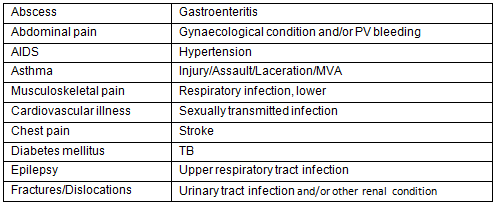
Table 2: Top 30 procedures and skills performed in district hospitals4
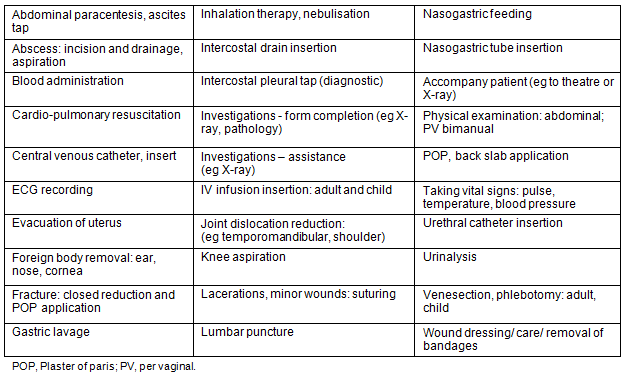
Another element in the scope of practice was to determine the level of independence from or dependence on doctors. This was done by reviewing and debating models from the USA, where physician assistants derive their scope of practice from the physicians they work with, in a model described as 'negotiated performance autonomy'9, and models in many countries in Africa where clinical officers, medical assistants and technicos often work completely independently and are frequently seen to be substitute doctors. It was thus agreed that the most appropriate role for mid-level workers in South Africa would be to work with doctors, supporting them without being totally dependent on them (or, better, a situation of interdependence, described in the USA1), while deriving their developing scopes of practice from both their undergraduate education and the experience and further training gained at the district hospitals.
As part of these discussions the debate about a name for the profession was quite intense. Medical assistants (as they were initially known) already working in South Africa, who had been trained elsewhere, including in the USA and Malawi, argued strongly against the use of the word 'assistant', because of implied subservience to and service of the doctor. The term 'clinical' was preferred to 'medical' because it more accurately described the role, and moved away from an implication of working only with doctors. However the concept of 'clinical officers', frequently used in Africa, was felt to be too militaristic or rank-related in the South African context, and thus the term 'clinical associate' was born, shortened to ClinA.
Another area of debate was that of generalism versus specialism. Many medical colleagues recognised the need for mid-level workers, but only in terms of their own specialities. Thus there were calls for anaesthetic assistants, ophthalmic assistants, orthopaedic assistants etc. The deciding argument, however, was that they should be trained as generalists at a basic degree level, with an opportunity to gain specialised skills thereafter, either through in-service training or postgraduate courses, to ensure that they would be able to fulfil the basic core needs of district hospitals, regardless of what additional skills were acquired later. Furthermore, evidence suggested that most of the 25%-70% of tasks performed by doctors that can be delegated to other healthcare professionals are generalist in nature10.
Moving to implementation: establishing the training program
Once these issues had been agreed, both within the national task team and with a wider group of stakeholders, a common curriculum document and course outline was developed, which could be used by each faculty that agreed to take on training to apply for registration of the degree through various internal and external structures. This envisaged a common core curriculum that would be implemented uniquely by each faculty, with variations relating to content and process, but with common outcomes and standards. The degree would be known as the Bachelor of Clinical Medical Practice (BCMP). An early agreement was that there should be a national exit exam, which was, and is, far from the norm in health professional training in South Africa.
In 2005, this framework was presented to the deans of the 8 medical schools in South Africa, with an invitation to develop BCMP programs in their faculties. The national department of health offered funding for the appointment of coordinators at each of the three institutions, and promised to fund the first cohort of students. Three institutions responded positively - Walter Sisulu University (Eastern Cape) (WSU), and the Universities of the Witwatersrand (Wits) and Pretoria (Gauteng) (UP) - largely because there were strong champions of the program in each of those faculties, with the others adopting a wait-and-see attitude.
Further intense program development then took place at each of the three institutions with much collaboration in the process. Approval of the new academic developments by all the internal and external structures was achieved, often involving intense lobbying and heated discussion. The perceptions of the program, both positive and negative, needed to be addressed (Table 3). Backing of the Ministry of Health was not always seen as a supportive factor, as institutions cited negative experiences with government in the past, and some faculty members felt the degree was being thrust upon them. However, counter-arguments were made around social accountability, the workforce needs of the country and the opportunity provided by the new degree. The process highlighted the fact that the division of skills into professions is often an arbitrary process, related more to custom, tradition, incentives, professional politics and power than to logical planning, health-system needs or providers' actual skills10.
Table 3: Perceived benefits and disadvantages of Clinical Associates (as seen by stakeholders prior to the first graduates being produced)11
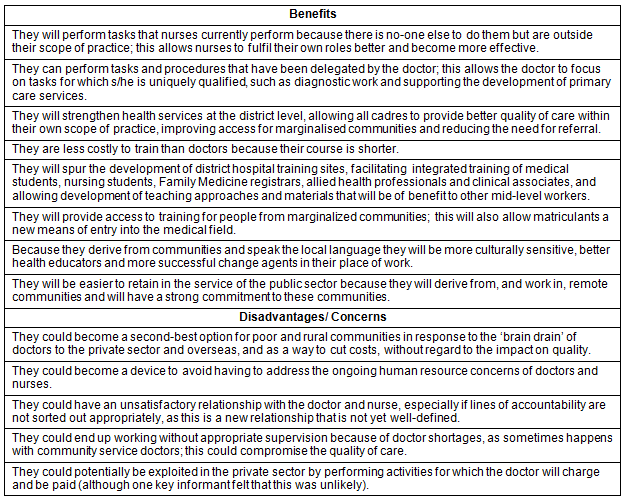
The BCMP was developed as a 3-year bachelor degree, with integrated, case-based learning and early clinical involvement, and the placement of students in district hospitals from early in the program. The students are trained to work in wards, outpatient and emergency departments, labour wards, procedure rooms and operating theatres. After graduation, they are expected to work under the supervision, but not necessarily in the physical presence of a doctor, covering a range of common problems seen at district-hospital level.
The process of educating and informing interested groups continued concurrently. Many issues were raised, and some disparaging articles appeared in the local press, such as an editorial in the South African Medical Journal12, but the concept was championed by academic family physicians because the new cadre provided an opportunity to strengthen the provision of primary medical care to rural and otherwise disadvantaged communities11. In fact, one group that asked questions but never doubted the need for this new cadre was rural doctors, with the support of the Rural Doctors Association of Southern Africa (RuDASA) being important throughout the process.
Thus in 2008, WSU launched the degree with its first intake of 23 students. The Universities of the Witwatersrand and Pretoria followed in 2009, with 25 and 56 students, respectively. Because the program had not been offered previously, the initial groups of students largely comprised students who applied for other health science programs and were offered this program as an alternative; however, subsequent intakes have mostly been made up of direct applicants, as word has spread, with demand rapidly exceeding the number of places available. Students are specifically recruited from rural areas; the demographic mix of students is such that a large proportion of students are from rural and previously disadvantaged communities. Bursary funding is now provided by provincial rather than national government, as well as by the military, but increasingly students are funding themselves.
Placing students in district hospitals for much of the training meant that intense negotiations took place with local health authorities to develop suitable sites and preceptors for the students. Training took place mainly in the provinces linked to the 3 institutions, viz. Eastern Cape (WSU), Gauteng (Wits, UP), Mpumalanga (UP), North West (Wits) and South African Military Health Services (UP, Wits). This process, however, also assisted in preparing local hospitals in the provinces to receive the students as graduates; because the profession was unknown, much work had to be done in educating managers, nurses and doctors regarding this new cadre and how best they could be utilized.
The first graduates: establishing the profession
As the first graduates from the three training institutions have been produced, they have been absorbed into district hospitals, mainly in the provinces mentioned, but also in others. A total of 397 graduates were produced by the end of 2013 (Table 4). Almost all the graduates have been absorbed into the public service, with a few being employed by non-government organisations. In the absence of strong leadership from the current national government, the three programs have played an important role in educating health service officials regarding the ClinAs and trouble-shooting problems that have arisen.
Table 4: Numbers of graduates from the three training institutions
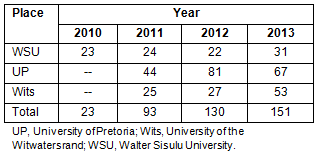
Two important factors have assisted. First, the American International Health Alliance's Twinning Project supported the establishment of 'twinning links' between each of the programs and US faculties training physician assistants, which has been an important source of support and mutual learning. Arising from this, they have increasingly supported joint activities among all three programs, including workshops to develop the national exit examination, which was first conducted in 2011. (The exam remains an agreement between the three institutions and is not yet an externally mandated process, nor is it regulated by the Health Professions Council). The Twining Project has also supported advocacy work to lobby for the professions and to educate the lay and medical public about the ClinAs.
Second, the ClinA graduates have organised themselves. As part of the twinning project, ClinA students were supported to attend the American Academy of Physician Assistants conference and student conference, and returned inspired about their role as pioneers of a new profession. Motivated by this, and supported by the Rural Health Advocacy Project, the Professional Association of Clinical Associates in South Africa (PACASA) was launched in September 2012.
The future: ensuring sustainability
The program continues to face challenges. Some faculty members in the existing institutions still regard the program sceptically and raise questions about its rationale. Commitment from the national department of health is not clear and strong, so that many policy issues regarding the profession and its functioning are not being addressed. Provincial departments of health have not always carried out sufficient planning, and thus there have been times when there are not immediately posts for graduates when they finish their course, and not all provinces participate; the Western Cape has taken a stance in opposition to the original decision and will not employ ClinAs. Some of the early trainees, who had in fact applied to study medicine, are seeking to move to medicine. Supervision is lacking in a number of district hospitals. Community service, required of other health professionals, has not yet been mandated for ClinAs.
At the same time, there are many successes. Although it is early days, there are already reports of important contributions being made by ClinAs to district hospital functioning, both anecdotal and more formally gathered in on-going monitoring and evaluation processes. Increasing numbers of students are applying for the program. Additional universities are seeking to participate, including some faculties of health sciences that do not have medical schools, which will be an interesting development. The BCMP is providing interesting challenging of clinical education for medical undergraduate programs to consider. The development of district-level training platforms that encourage multidisciplinary collaboration also opens up the possibility of training other health professionals intended to work at the district level (including nurse clinicians, doctors and family physicians) in close contact with the communities they serve, with an emphasis on team work13.
Wits and UP are actively moving forward with the development of postgraduate programs to offer further training for ClinAs, something they have been calling for strongly. UP is registering a Batchelor of Science Honours degree with a focus on Community-oriented Primary Care (COPC); this is an inter-professional program based on COPC, being implemented as part of the re-engineering of primary health care in South Africa. Wits University is in the process of registering a BCMP Honours degree, starting with emergency medicine, but with other fields planned, such as maternal health, orthopaedics and infectious diseases.
South Africa has thus developed an innovative model with the potential to contribute substantively to the development of quality district-level health care13. The initial estimate of the need for ClinA's, based on a calculation of a minimum of six qualified ClinAs per district hospital of which there are 257 in South Africa, was 154214. However, there are already calls for the ClinAs to work in many of the 66 regional hospitals, to move out into health centres, to work in non-government organisations and even to work in private. The COPC approach to the re-engineering of PHC is creating Municipal Ward Based Outreach Teams in which Community Health Workers, supported by nurses and doctors, do comprehensive home-based care at a community level15,16. The roles of ClinAs in these teams are being explored and students are exposed to this context; it is expected that ClinAs will play an important role in these teams in future. Thus the demand is far greater than can be produced by the current training programs. As the value of this cadre is realised, the demand will only increase.
Clinical associate practitioners are working in rural areas and through PACASA are aligning themselves with rural practitioners. PACASA was part of the planning committee for the annual Rural Health Conference in 2013, organised by RuDASA. Early indications are that more than half of the students intend to work in rural areas while more than 90% intend to study further17. It can thus be expected that the ClinAs will become an essential backbone in rural district services in South Africa in the future; however, with the danger of urban drift only time will tell if they can make a significant impact on human resources for rural health care, whatever the current intentions of students17. A clear career path and identity within the profession, acceptance by other health workers and support from the health system will be needed, and there are early signs that this is happening.
References
1. Mittman DE, Cawley JF, Fenn WH. Physician assistants in the United States. BMJ 2002; 325(7362): 485-487.
2. World Health Organization. Increasing access to health workers in remote and rural areas through improved retention. Global policy recommendations. Geneva: World Health Organization, 2010.
3. Pick W, Khanyisa N, Cornwall J, Masuku M. Human resources for health: a national strategy. Pretoria: National Department of Health, 2001.
4. Hugo J, Hugo D, Mawela L. Common Conditions and Task Gap for Midlevel Medical Workers in District Hospitals in South Africa: Information to inform curriculum development. Report to Human Resource Planning Directorate, National Department of Health, Pretoria. Brits: Madibeng Centre for Research, 2005.
5. Truscott A. A method of teaching clinical problem-solving skills to primary health care student nurses. South African Family Practice 2010; 52(1): 60-63.
6. Lord J. Future of primary healthcare education: current problems and potential solutions. Postgraduate Medical Journal 2003; 79(936): 553-560.
7. Doherty J, Conco D, Couper I, Fonn S. Developing a new mid-level health worker: lessons from South Africa's experience with clinical associates. Global Health Action 2013; 6: 19282.
8. Boelen C, Woollard B. Social accountability and accreditation: a new frontier for educational institutions. Medical Education 2009; 43(9): 887-894.
9. Schneller ES. The physician: innovation in the medical division of labor. Lexington: Lexington Books, 1978.
10. Dubois CA, Singh D. From staff-mix to skill-mix and beyond: towards a systemic approach to health workforce management. Human Resources for Health 2009; 7: 87.
11. Doherty J, Conco DN. Mid-level medical workers in South Africa: a situation analysis. Johannesburg: School of Public Health, University of the Witwatersrand, 2010.
12. Niekerk J. Mid-level workers: high-level bungling? South African Medical Journal 2006; 96(12): 1209-1211.
13. Doherty J, Couper I, Fonn S. Will clinical associates be effective for South Africa? South African Medical Journal 2012; 102(11pt1): 833-835.
14. Hugo J, Tshabalala Z, Couper I, Truscott A, Sithole B, Mahlangu J et al. Midlevel Medical Worker Programme for South Africa: curriculum and training plan. Report to National Department of Health. Pretoria: Family Medicine Education Consortium, 2005.
15. Bam N, Marcus T, Hugo J, Kinkel H-F. Conceptualizing Community Oriented Primary Care (COPC) - the Tshwane, South Africa, health post model. African Journal of Primary Health Care & Family Medicine 2013; 5(1): 3.
16. Marcus TS. Community Oriented Primary Care L2 Primary Health: COPC Principles, the Individual, the Family and the Social Structure of Society. Cape Town: Pearson Education South Africa, 2013.
17. Moodley SV, Wolvaardt E, Louw M, Hugo J. Practice intentions of clinical associate students at the University of Pretoria, South Africa. Rural and Remote Health 14: 2381. (Online) 2014. Available: www.rrh.org.au (Accessed 11 August 2014).


